Since two days, the USA and Great Britain are ‘bombing Yemen’. That is: the ‘militants’ of the Houthi ‘rebel’ movement in control over the northern parts of that country.
Mohammed Huwais/AFP/Getty Images/TNS
Unsurprisingly – perhaps also because I’ve authored two books about air warfare over Yemen of the last 70 years (Hot Skies over Yemen, Vol. 1, covering the period 1962-1994, and Hot Skies over Yemen Vol. 2, covering 1994-2017) – many are asking me what do I think about this affair.
As so often, understanding my standpoints is unlikely to be easy unless one knows a little bit about the backgrounds of this conflict. And, please mind: to say that the following is ‘massively compressed’, would be an understatement-
It could be said that it all began in 1962, when an Egypt-supported military coup toppled the ages-old Imamate in Sana’a. The last imam was highly unpopular in the population: alone because he was backward, isolating the country and fiercely preventing any kind of progress. But, the British knew better: because their government hated the Egyptian president Nasser, they convinced the Saudis to finance a clandestine operation in which the British (and French, and Belgian, and few other) military veterans were training and commanding an insurgency against the new, Egypt-supported Republican government in Sana’a. The British knew that insurgency had no trace of chance of winning the war, but hey: since the Saudis were happy to provide the necessary gold: why not?
In the long run, though, the British involvement led to deeper Saudi involvement in Yemen: from around 1967-1970, Riyadh began supporting a clique of military officers and merchants in control over Sana’a, in exchange for which these left them spread Wahhabism (official Saudi religion, and the most militant and intollerant of all the sects of Islam) in the country…
That was the northern part of the country. The southern part was under the British dominance: indeed, until 1967 (and to keep a very long story short), this consisted of the British Protectorate of Aden and a confederation of various tribal areas. In that year, the British withdrew and then a Marxist government supported by the Union of Soviet Socialist Republics (USSR/Soviet Union) and Cuba took over, and largely destroyed the traditional tribal structures, driving many of conservative tribes northwards.
On its own, ‘no problem’. Sure, nominally, the population of Yemen was predominantly Shafi (i.e. Sunni; assessed at about 50%), and Zaidi (i.e. Shi’a, assessed at about 35%). Except in the area north of Sana’a (dominated by Zaidis), though, and until modern times, the mass of Yemenis didn’t really care whether they’re Shafi or Zaidi: they were regularly intermarrying and worshiping in each other’s mosques. If at all, major difference between the two communities was that, historically, the warlike Zaidis used to dominate the more sophisticated and better educated Shafis. But, thanks to Saudi-sponsored spread of Wahhabism there was ever less tolerance for this: indeed, many Zaidis moved to the south (at least to the Sana’a area), while an even larger number adopted Wahhabism, or at least Salafism…and ever more of youngsters began leaving the country…
Then came the year 1990 when, in reaction to Sana’a’s support for Iraq’s invasion of Kuwait, countries of the Gulf Cooperation Council – see: Saudi Arabia, Bahrain, Qatar, United Arab Emirates (UAE) etc. – expulsed more than one million Yemeni guest-workers. The returnees found their homeland dominated by the contemporary president Saleh and his clan, plus a clique of military commanders and merchants tied to Saudi-run patronage networks, which were diligently spreading Saudi-supported Salafism and Wahhabism.
These ‘new’ or ‘young’ Zaidis demanded their piece of cake, but to no avail: before soon, they found themselves not only at odds with chieftains of traditional tribal confederations, but with the government in Sana’a, too. The latter was meanwhile letting three major Islamist groups grow in power:
- Wahhabists (the future ‘al-Qaeda in the Arabian Peninsula’, AQAP), part of which then became highly influential in parts of the armed- and security forces and grew the
- Muslim-Brotherhood-affiliated Islah Party, and the
- so-called ‘Quietists’ (something like ‘Salafists, Yemeni-style’).
During the Yemen Civil War of 1994, Saleh then deployed these groups in support of his armed forces, and conquered the South, concluding the re-union of the country. After that war, he then turned all of his forces against the Zaidis, in turn prompting the emergence of the Houthi movement.
Contrary to what many say, and although influenced by theologians educated in the Islamic Republic of Iran, the Houthis initially had no clearly determined political- or military organisation. Indeed, their command structure and recruiting were overruling even all the traditional tribal limits. Which is why Saleh’s armed forces and security services experienced immense problems while trying to suppress them. In the course of the first five out of eventual six Sa’ada Wars, fought 2004-2010, the regular Yemeni armed forces, and their Islamist allies, experienced one defeat after the other….
Then, in 2009, the Houthis – who meanwhile grew into a potent armed force, supported by instructors of the Islamic Revolutionary Guards Corps (IRGC) and Hezbollah – did a mistake, and sent some of their forces over the border to the north, into Saudi Arabia. Taken by surprise, the Saudis suffered extensive casualties, early on, but then got their business together and run a highly successful campaign of ‘air policing’. Essentially, they’ve bombed the Houthis along the border and in northern Yemen for some six months, until the ‘rebels’ gave up, withdrew south of the border and accepted a cease-fire.
Fast forward… the mass of Yemenis grew fed up of Saleh’s corruption and mismanagement: this reached such proportions that up to 50% of his armed forces were on the verge of an armed mutiny. Left without a choice, in 2011, he gave up. However, during the unrest, much of armed forces and police withdrew from southern and eastern Yemen, in turn letting the AQAP take over. And since AQAP was a de-facto ally of Saleh, for the last three months of his rule, he ignored this entirely. It was only once Saleh was out of the presidential palace, in September 2011, that the new, Saudi-supported government launched a major counteroffensive and defeated the Jihadists in a matter of something like one week…
However… this new, Saudi-supported (and -imposed) government, led by a new President of Yemen, Hadi (who actually had zero popular support but ‘won’ single-candidate quasi-‘elections’), promptly excluded the Houthis from any kind of power-sharing. Indeed, it acted as if there are no Houthis at all.
Morever, when Hadi then attempted to introduce sweeping reforms, the part of armed forces still loyal to Saleh mutinied against the new rule – and this process only picked up as Hadi, on Saudi insistence, continued pushing. Eventually, the armed forces fell apart to the degree where in September 2014 the Houthis found it easy to advance on Sana’a and bring the capital under their control. By January 2015, they sacked most of military commanders that were members of, or sympathising with the Islah party, and then ‘disappeared’ few thousands of its members… and then arrested and forced Hadi to resign, and dissolved the parliament. By February 2015, the Houthis were already on advance into southern Yemen, and their ranks swelling rapidly as up to 60% of the armed forces joined them – even more so because Saleh then did so, too, bringing with him most of the former Republican Guards units (which included much of air defence and ballistic missile units).
Around the same time (early 2015), the government in Riyadh, concerned about the Iranian military intervention in Syria, was actually keen to launch its own military intervention in that country. But – and yes: this is another much-oversimplified explanation – the US president Obama told it to shut up and, if it has to, care about Yemen ‘instead’. And with the Houthis on the way to Ta’izz and Aden, the Saudis then organised their own coalition and, on 26 March 2015 initiated the Operation ‘Decisive Storm’ (or ‘Storm of Resolve’, whichever way you prefer): a Saudi- and UAE-led military intervention in Yemen.
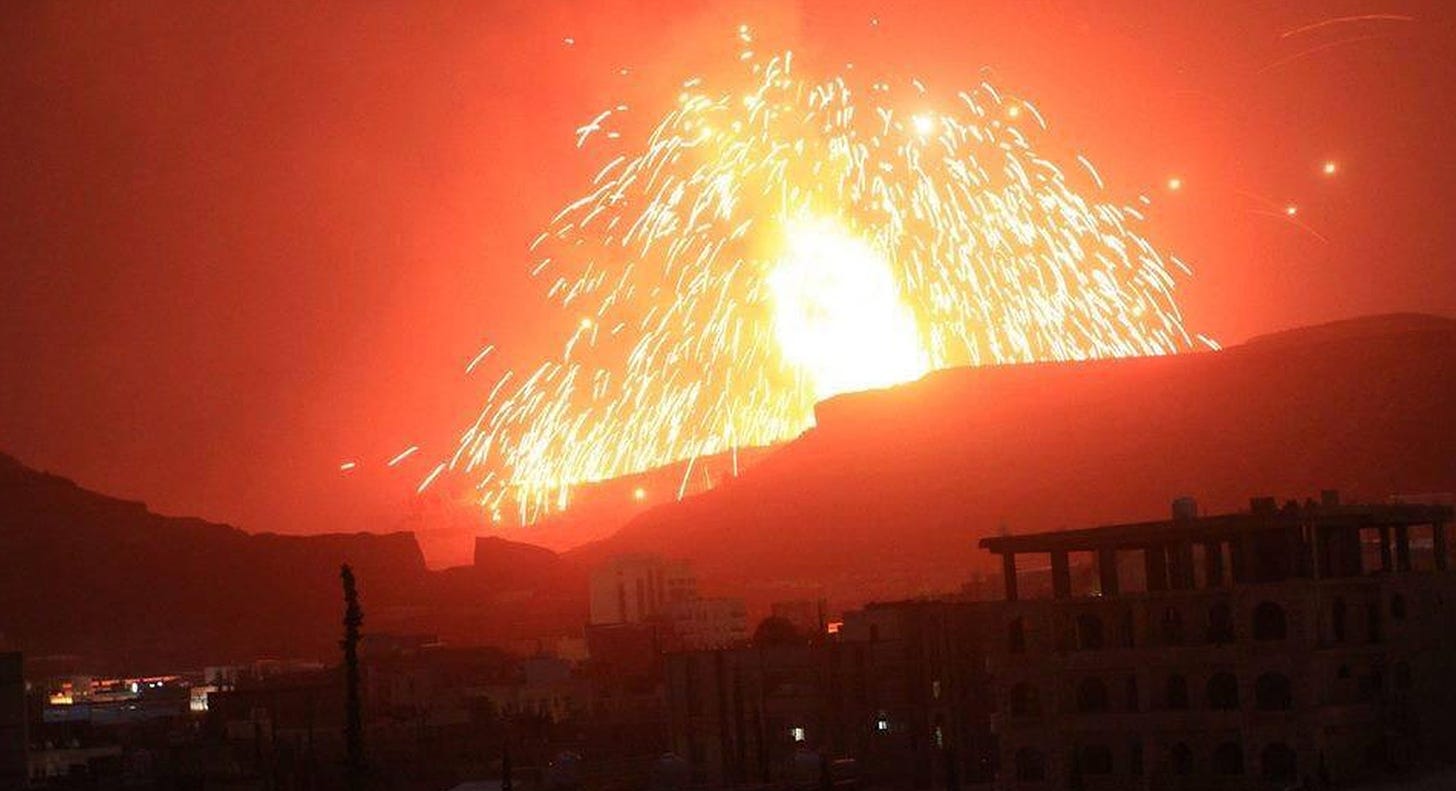
Apparently, much of ideas for this enterprise were based on experiences from the Sixth Sa’ada War. see: ‘few months of air policing, and the Houthis are going to give up’. And, please, do not be as… ‘average’ and follow the ‘Arab military incompetence-flock’: the Saudi/Emirati-led coalition fought really well. It worked precisely along the US military doctrine, destroyed the mass of Houthi-controlled air defence systems, then the air force, even lots of the Missile Brigade Group (the unit equipped with ballistic missiles); it targeted and knocked out major command nodes of both the Houthis and Saleh; and then began destroying ground forces of the Houthi/Saleh alliance. And, the Saudis were also sane enough to understand: if they send their own troops into Yemen, they would find themselves fighting all the Yemenis, including those (nominally) fighting ‘for Hadi’, not just the Houthis. That’s how much the Saudis are despised in the country.
….which is also why the ground element of the operation took few months to prepare, and – once it was launched – it primarily consisted of Emirati, Bahraini, and Qatari troops. But, once that element was initiated, in July 2015, it advanced very quickly. Emiratis (with some Saudi support) landed in Aden and from there rapidly advanced towards north and west. In August, the Bahrainis (reinforced by ‘pro-Hadi’ Yemeni forces) also crossed the border from the north to advance on Ma’arib. Everything was coming forward fine. Until the Saudis and allies were forced into the realisation that they have too few troops for the task on hand. Essentially, they’ve expected to deploy combat troops, and let the Yemenis re-organise themselves in their rear. However, the Houthis and Saleh have savaged both the regular Yemeni armed forces and police to a degree where when the coalition combat units advanced, they left literal ‘vacuum’ in their rear: the AQAP promptly brought sizeable stretches of eastern Yemen under its control as result, just for example…
And so, in September 2015, the Saudi-led coalition stopped its offensive in direction Sana’a and decided to resume the same only after re-establishing Yemeni armed forces and police and organising the civilian life in their rear.
That was a fateful decision that cost them the victory in this war: yes, they have then brought in foreign mercenaries (foremost from Sudan, but also from the West, including USA and France), and organised something like a new Yemeni Army, but this was not particularly supportive for Hadi. Foremost, the Houthis meanwhile withdrew back towards Sana’a and Hodeida, and heavily mined all the approaches to northern Yemen: combined with rugged terrain, this made any kind of continued advances in that direction extremely costly.
In turn, this bought the time for the IRGC to appear on plan ‘in force’, and help the Houthis develop their ballistic missile- and UAV-capabilities, and then start raiding Saudi border posts. That was what characterised this war for the next 6,5 years. until the China-mediated quasi-cease-fire of March 2022 (to make sure: the war is not really over: indeed, the fighting continues to rage in much of southern Yemen, ever since).
Now, despite all of this, many people still think about the Houthis as a ‘ragtag militia, consisting of narkomans chewing khat all the time’.
….and about Yemen as a ‘tribal confederation’.
….and certainly enough: Yemen is not a country renowned for its rocket scientists.
….and, some of that is even correct. For example: there’s no denial that up to 90% of adult males in Yemen are chewing khat for 3-4 hours a day, on average.
However, contrary to the situation of, say, 2009-2010 - and although many photos are still showing them that way (see below for one of recent example) - the Houthis nowadays are none of ‘your typical militia, armed with AK-47s’: over the last two years, the IRGC took care to greatly expand their missile- and UAV-forces, even launch local production of several UAV models. Moreover, the Houthis have significantly bolstered their ‘conventional’ fighting formations, and constantly refined their de-centralised command structure – to the degree where in certain of last few big battles in the Yemen War, small groups of their combatants proved capable of tying down entire brigades of enemy troops – with help of extensive use of mines and improvised explosive devices (IEDs), for example. Furthermore, over the last eight years, the Houthis at least overcame – if not destroyed – much of traditional tribal structures in the Yemeni society, and unified much of the population. They do enjoy significant doses of popular support, and no sweet-talking by all the possible Western experts is ever going to change this. This is what enabled them to survive 7.5-8 years of Saudi- and Emirati-led military onslaught that completely destroyed the country’s infrastructure.
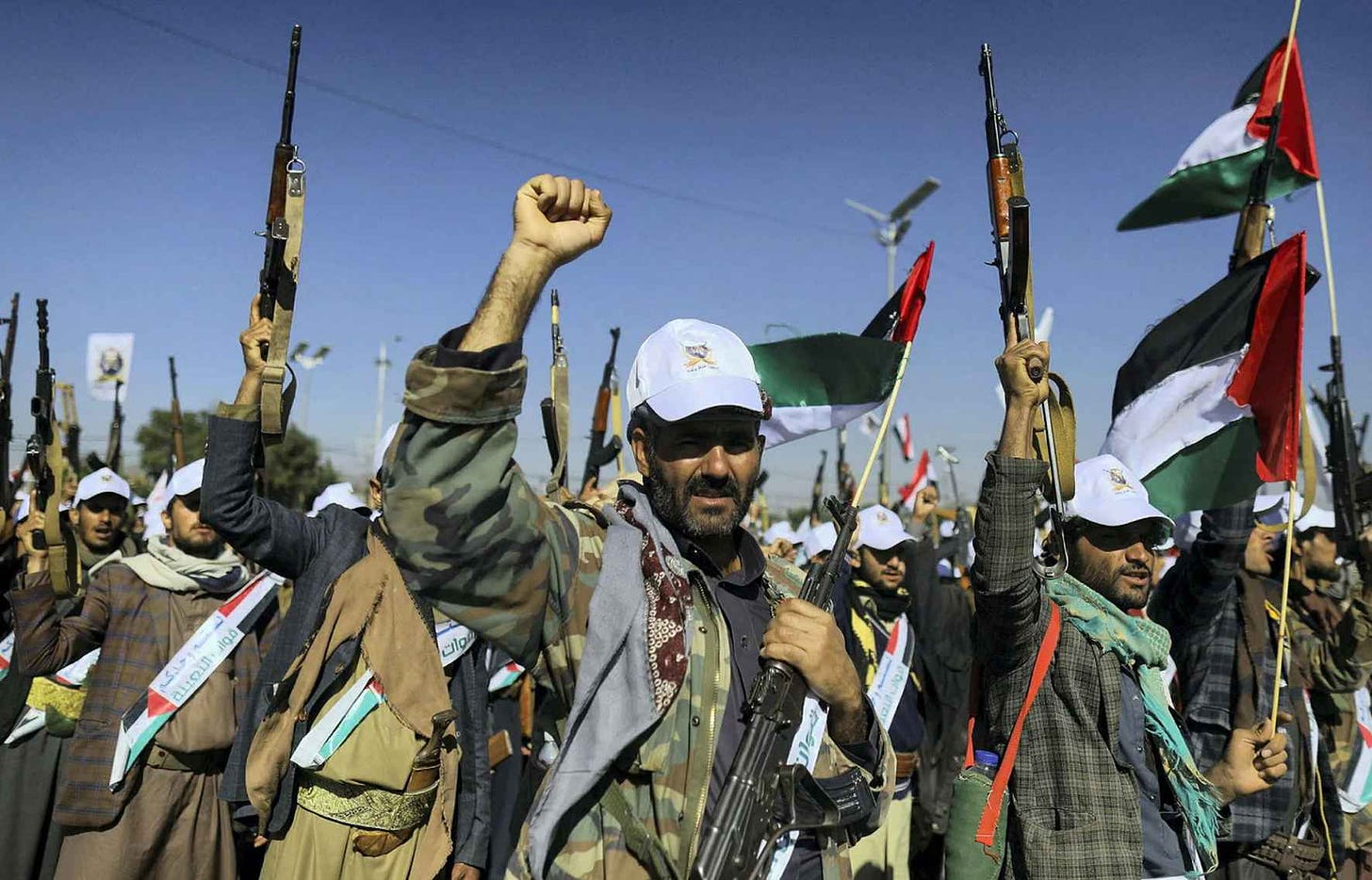
‘Modern’ Houthi-led Yemeni armed forces are combat-experienced, well-versed in all sort of tricks, and deploying a wide range of weaponry. Some of the latter is consisting of most unusual – often unexpected – combinations of high-tech and relatively primitive-, sometimes obsolete equipment. In this regards, it cannot be denied: the Saudi- and Emirati-led attempt to ‘disarm’ the Houthis has misfired, massively. As has the Saudi attempt to convert most of Yemen to Wahhabism. That, however, is where any parallels to the Russian invasion of Ukraine end…
One should not make a mistake and just declare them for ‘Iran’s proxies’: the Houthis do depend on Iranian support for the mass of their heavy arms, sure. But, we’re living in the 21st Century, and making drones is no discipline reserved for major powers. Moreover, the Houthi leadership is acting independently from Tehran, and pursuing its own interests. One of these is a confrontation with Israel – which is good for the popularity of that leadership at home, and earning them yet more support from Tehran.
….which is playing straight into the hands of the IRGC. This is meanwhile not only controlling half of Lebanon, half of Syria, and much of Iraq, but now can claim for itself to be controlling half of Yemen, too; in that fashion, it’s ‘encroaching’ Saudi Arabia (where, BTW, much of population is consisting of the Shi’a) – and ‘actively confronting the Zionist entity’, which is making it popular at home, and also in wide circles abroad (and that yes: even when the IRGC is not directly involved in a confrontation with Israel, which in turn is only making things outright comfortable for Tehran).
That’s how comes that the Houthis were more than happy to start firing ballistic-missiles and UAVs at Israel, back in October, and then – certainly with support of the IRGC – start targeting merchant ships either owned by or underway to Israel and passing the Bab al-Mandeb Strait (connecting the Red Sea with the Gulf of Aden, and thus the Indian Ocean: the primary approach to the Suez Canal from the south).
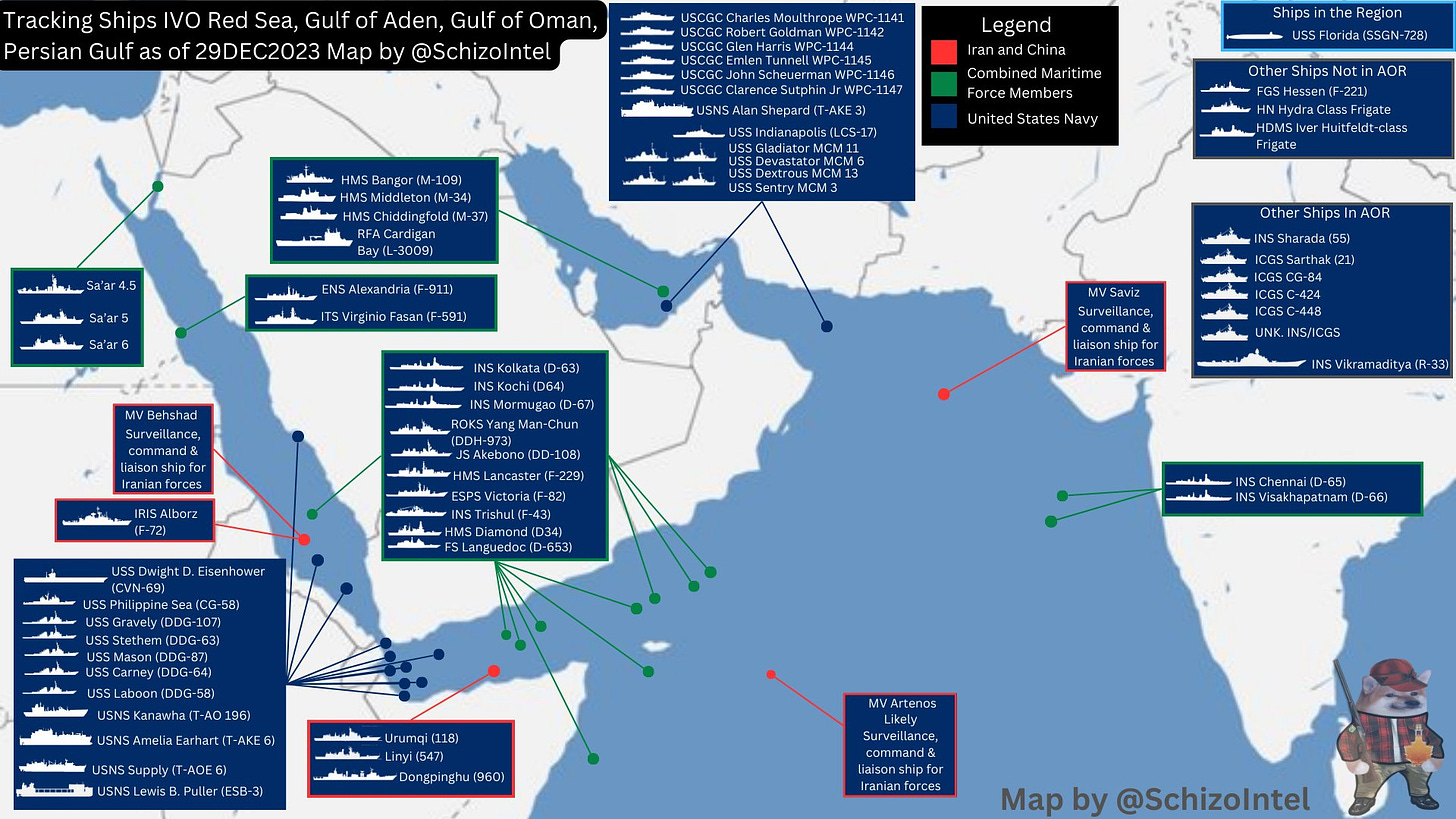
When Americans and different allies did their best to stop such Houthi operations, the result was an escalation: the Houthis began attacking any ships they could detect – including warships of the US Navy.
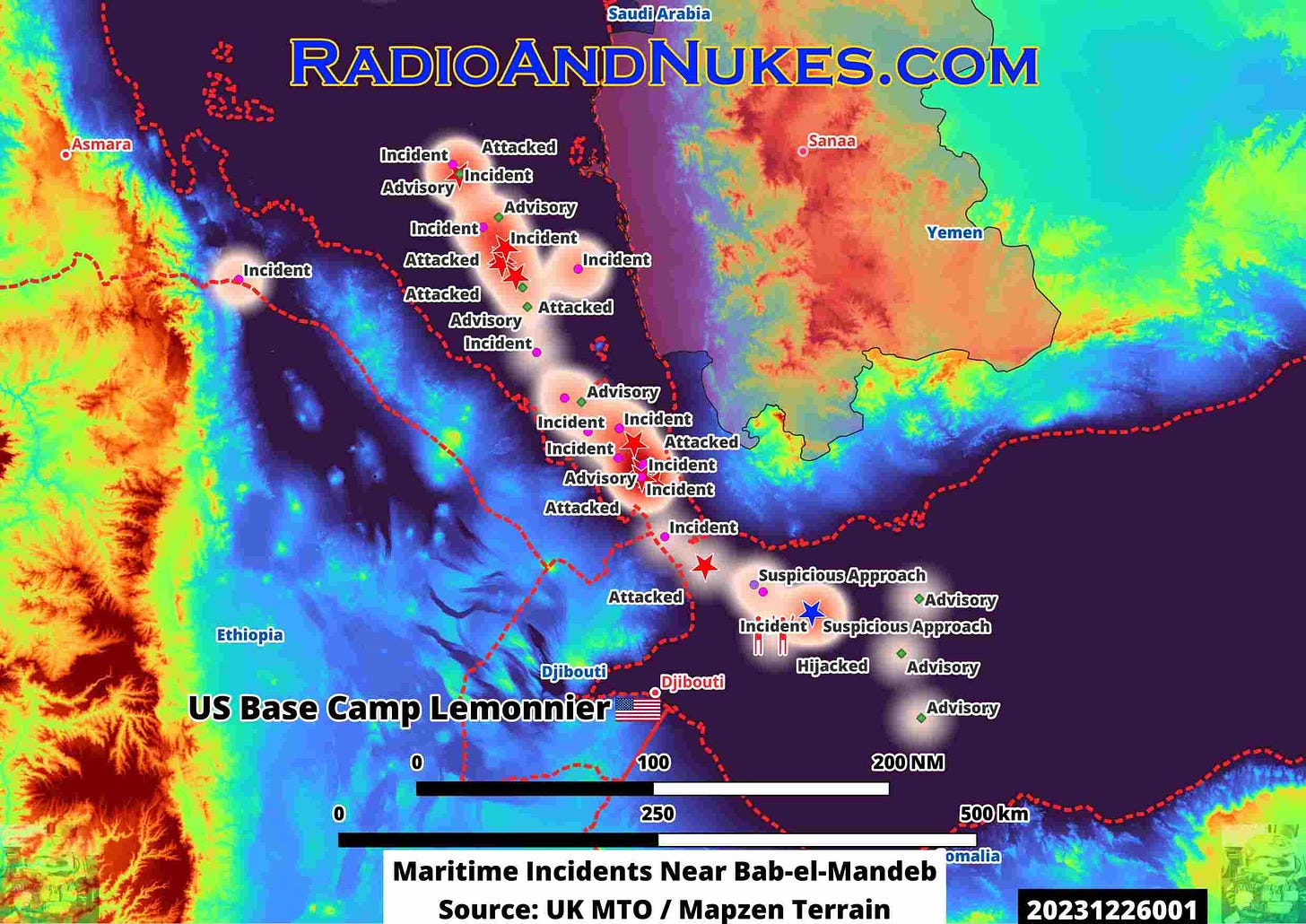
A ‘logical’ excuse was then that the USA (and Great Britain) ‘had no other choice but to launch strikes’…
…of course there is always a different choice, but, traditionally, both for Washington and London, it’s all other choices that are simply unacceptable…
Point is: thinking the Houthis might ‘fold’, or at least the Americans and the British might ‘teach the Houthis a lesson’, at least ‘impress’ them in any way… Sure, except for spending missiles costing millions apiece to blast empty sun-shelter around Sana’a International, the US and British air- and missile strikes are likely to knock out this or that radar operated by the Houthis to monitor the international traffic off the coast of the Red Sea under their control. Perhaps even some of launchers.
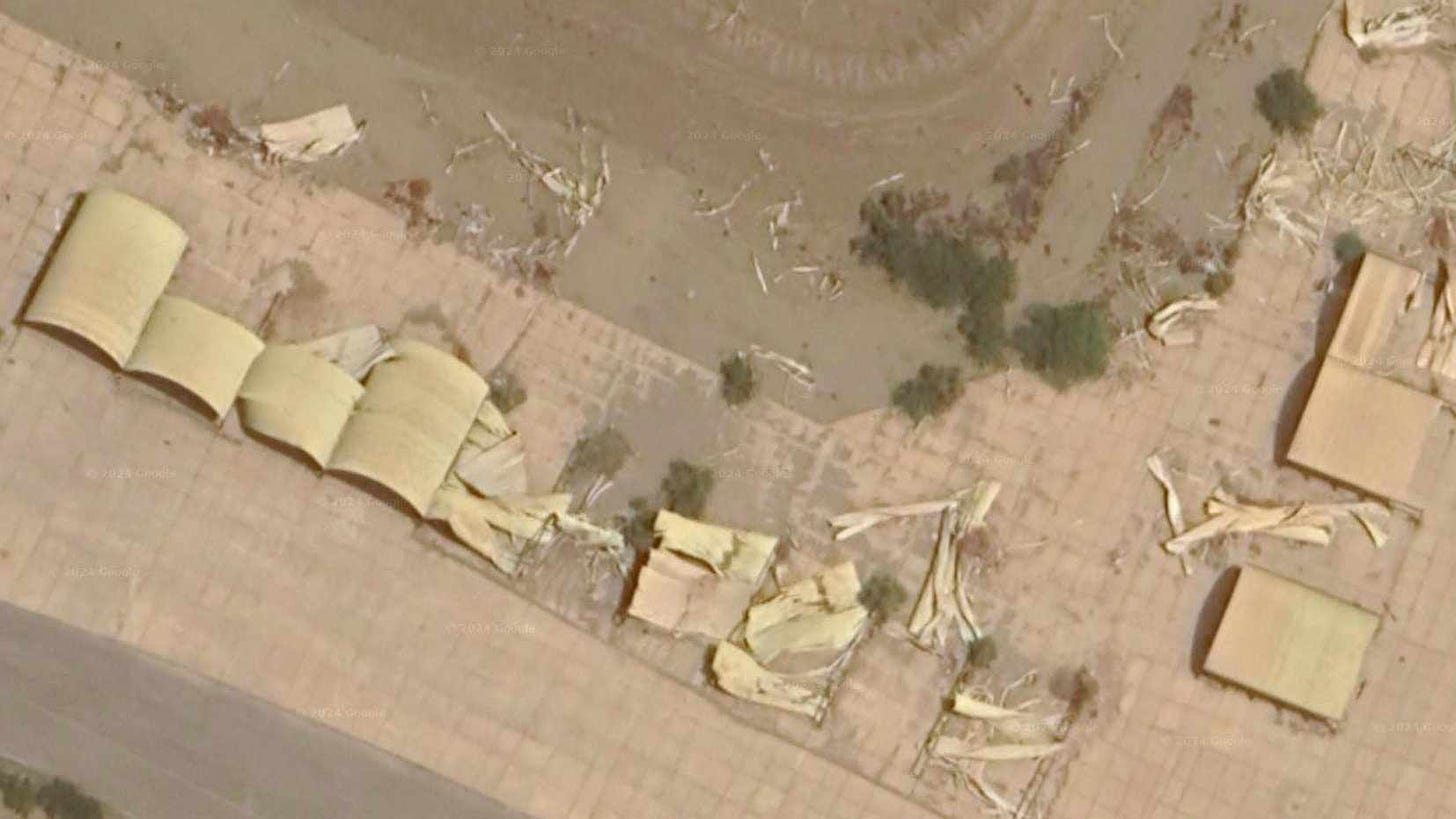
But, the problem is that neither the USA nor the UK can continue running such operations for any longer periods of time. At least not longer than few months – except both remain obsessed with the same ‘mission creep’ dominating their politics for decades, of course. The Houthis and the IRGC are from the Middle East; confrontations of this kind are excellent for them also in regards of covering-up the ‘embedment’ of themselves in the local population; and, they have proven themselves capable of resupplying with ever more advanced weaponry despite years-long blockade of the Yemeni coasts. Which means that there is no way this operation can effect something like ‘transit security’ for Bab al-Mandeb Strait in the long term – which in turn means that Israel, together with much of the West, is going to continue experiencing delays and increasing costs of imports of various goods from Asia… which is as bad also because the USA and the West are already busy with conflicts in Ukraine and Israel/Palestine, and all the time nervously watching over their shoulders in direction of China, because of Taiwan…
With other words in no way is this going to bring ‘peace and stability’ to the Middle East: for 106 years meanwhile, both the USA and Great Britain are excelling only in bringing anything else than peace to that part of the world. And without peace, there will be no security for Israel, either.
….but well, there are many people believing in much more ridiculous things…
***
ADD-ON:
As of 13 January, the Houthis announced that they were 'focusing on maritime shipping associated with the Zionist entity. Today, American and British ships will no longer dare to cross the Red Sea.'
Before soon, the mass of Western Experten (mis)declared this into a 'blockade of the Suez Canal’.
Nominally at least (and 'actually', too) the US- and British air strikes are said to have been launched in order to suppress the Houthi capability to target shipping in the southern Red Sea with their ballistic anti-ship missiles. This because while the US and allied warships have it relatively easy to detect, track, and shot down Houthi UAVs and anti-ship missiles, nothing similar it valid in regards of their ballistic anti-ship missiles...
However, for an operation of that kind, more than half of air strikes and cruise missiles so far have targeted unrelated aim points. For example, Camp Kahlan (north of Sa'ada), Abbs airfield, Dailyami AB/Sana'a International, Dhamar and Ta'iz airport:
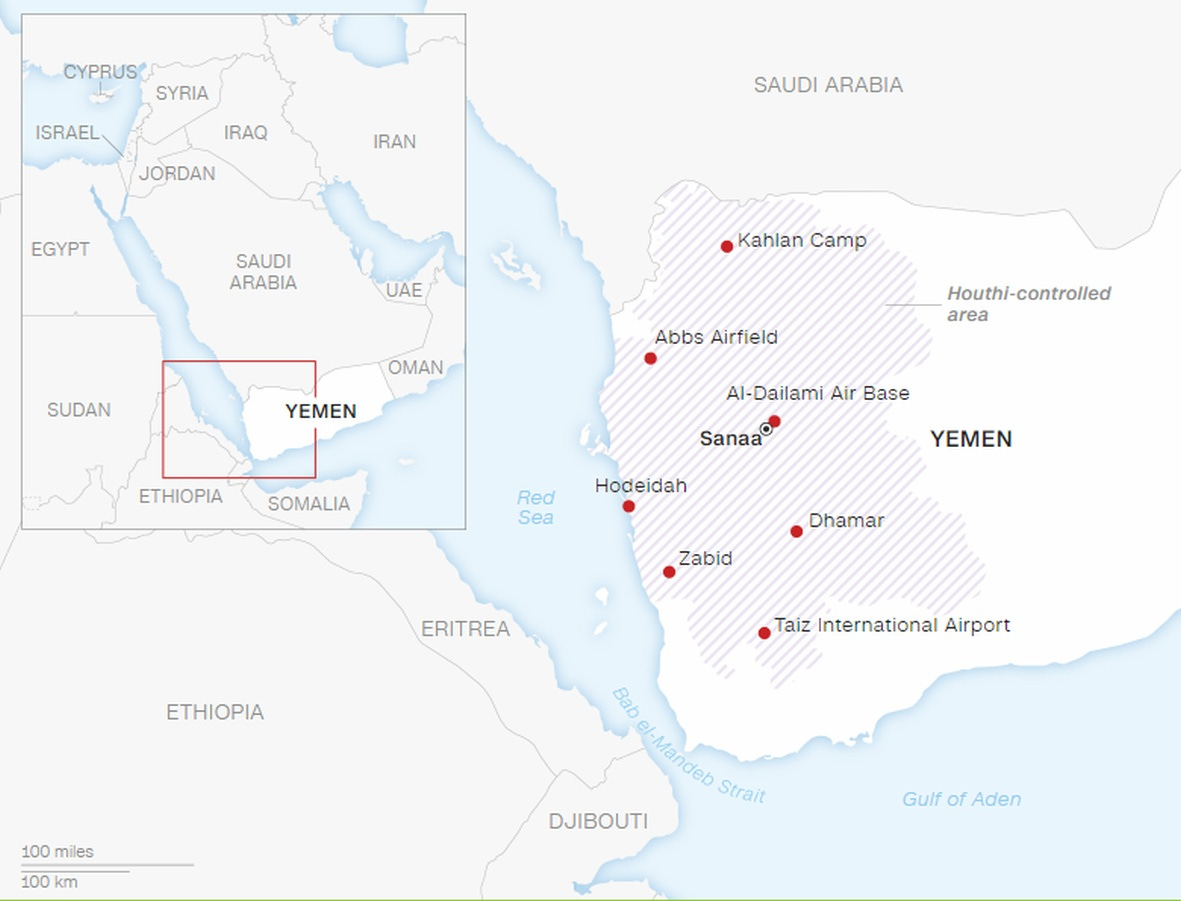
....while Washington has officially declared that it wasn't US forces that hit the fishery boats in the port of Hodeida, yesterday (13 January)... Netanyahu then officially announced, 'This is our war against the Iranian axis of evil, Hamas, and Tehran’s Houthi proxies'...
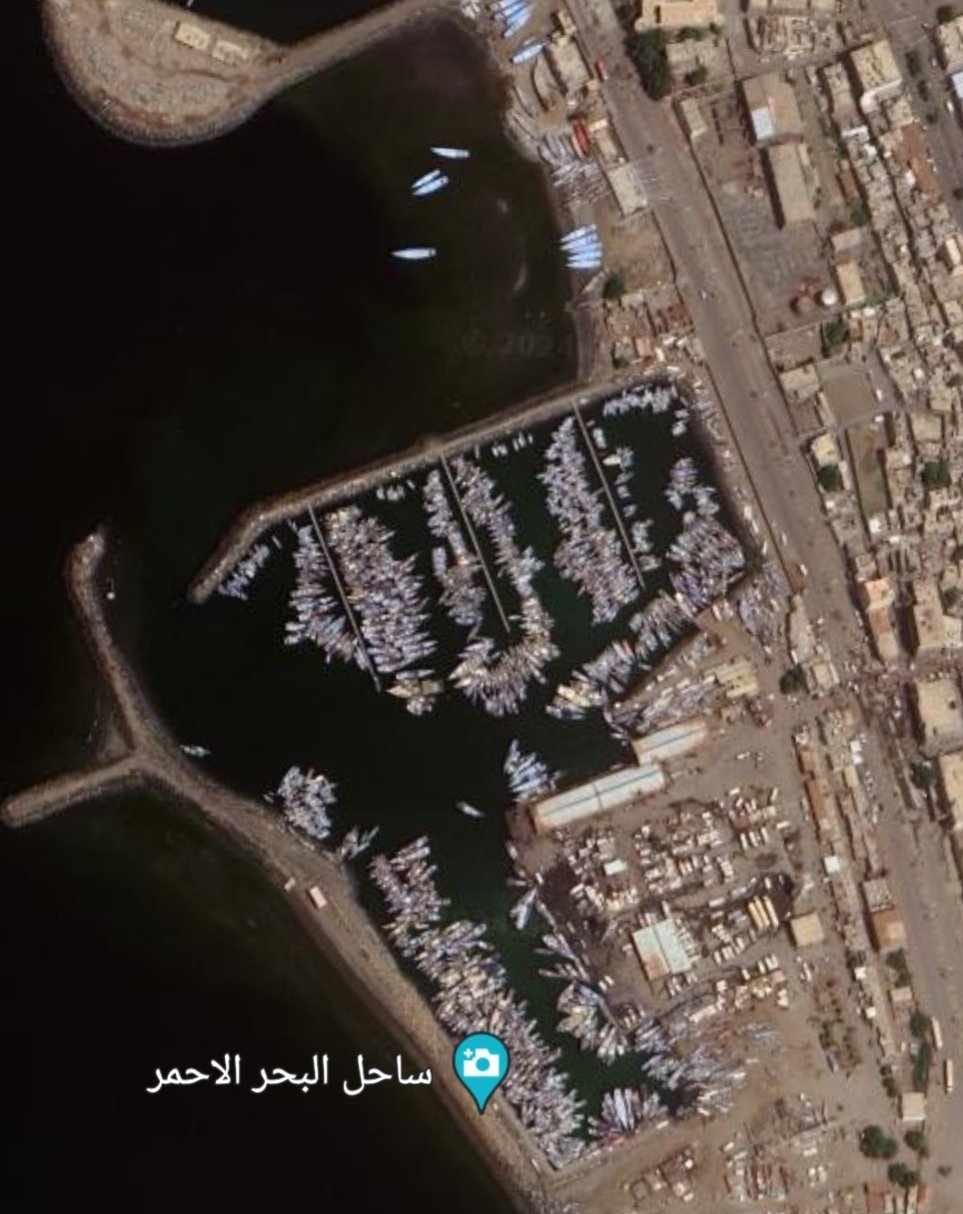
With other words: this is now another war where everything is developing (precisely) along the plan.
The content is published with the permission of the author. First published here.